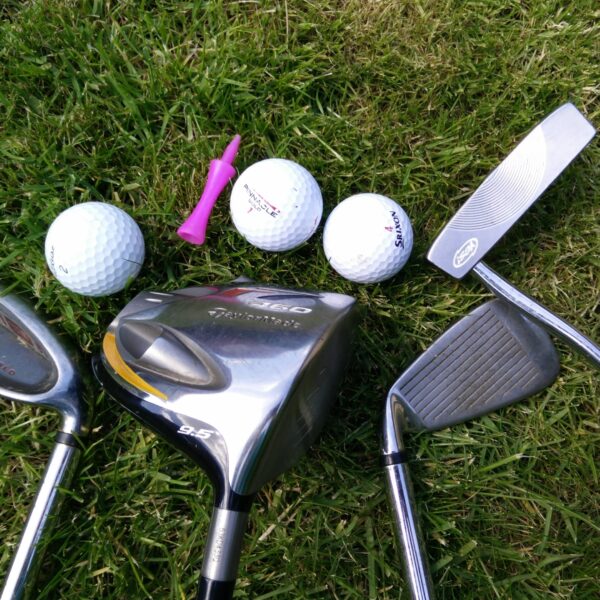Do you want to improve your athletic performance and cut the risk of injury? Then turn your attention to your hips.
The hips are one of those body parts that most people don’t think about. And when they’re weak, discomfort, movement deficiencies, and injury are the ultimate result.
But it doesn’t have to be.
Good news is, strengthening the muscles surrounding the hip joint is one of the best ways to keep your hip joints healthy.
For more icing on the cake, most hip strengthening exercises are easy to incorporate into your daily routine and can easily be added to your strength workout program.
And if you don’t know where or how to get started, you’re in the right place.
In today’s post, I’ll not only discuss some of the many reasons you should be strengthening your hip muscles, but I’ll also share with you some of the most effective moves to do so.
Anatomy of the hips
Before I delve into the hip exercises you need, quick anatomy lesson.
When talking about hips, I’m typically referring to any muscle that crosses over the hip joint.
Found in the upper leg, where the bone attaches with the pelvis, the hip joint consists of mostly a ball and a socket joint.
The hip joint is in charge of many day-to-day activities. Each time you walk, sit, bend down, scale up a flight of stairs, it’s called into action. That’s why the hips are considered of the main weight-bearing joints in the body.
The Hip Muscles and Their Functions
There are over 20 muscles that cross the hip joint, including the hamstrings, the glutes, the psoas, the abductors, the adductors, the hip flexors etc. Each and every one of these muscles plays a specific role.
The hips are also in charge of lifting the legs to the side (abduction), bringing the legs back in toward one another (adduction), and bending at the hips. The hip muscles are also in charge of keeping your lower body in a stable, good position.
In other words, your hips have a lot on their to-do list, and when they’re dysfunctional—weak, tights, or otherwise not functioning optimally—you can find yourself in pain and facing many overuse injuries and issues.
Don’t take my word for it. Here’s a quick look at some of the studies that found a strong link between hip dysfunction and pain and injury.
Study 1
The risks of Iliotibial band syndrome onset are high in the presence of an exaggerated hip rotation and inward collapse during the gait cycle, according to a study published in the Journal of Orthopaedic & Sports Physical Therapy.
Study 2
Research reported by the Clinical Journal of Sports Medicine revealed a strong link between overuse injuries, such as runner’s knee, and weaker hip muscles—mainly weakness in the hip flexor, adductor, and abductor—when compared to a control group.
Study 3
Research published in Medicine & Science in Exercise & Sports found that female runners suffering from runner’s knee reported greater pelvis instability in their running gait than the pain-free runners.
I can go on and on about the research conducted on the subject, but as you can already see, the evidence is overwhelming. It’s really up to you what to do with this valuable information.
The Exercises
Let’s jump into the practical stuff.
Add the following five exercises to your workout routine to strengthen your hip region. These should help add more stability and support to the movement of your feet, ankles, and knees.
Shoot for three sets in the 8 to 10 rep range. Do more as you build more strength and stamina over time.
Single-Leg Bridge
Begin by lying on your back, feet flat on the floor, and both knees bent with the arms pressed to your sides.
Next, engage your core, elevate your hips and squeeze your glutes, then drive through the heels and press your hip toward the ceiling. Then raise your right leg in the air, keeping as straight as possible. Hold the position for a moment then lower it down to the floor to complete one rep.
Donkey Kicks
Assume an on-all-four position, hands directly under the shoulders, and knees under the hips.
Next, engage your core as you gradually lift your right leg behind you until it’s parallel to the ground. Keep the foot flexed and knee bent throughout.
Hold the pose and pulsate your right leg toward the ceiling for a moment, then return to starting position to complete one rep.
Bird Dogs
Stay in all-four position, making sure your abdomen and lower back are in a neutral position.
Then, while activating your core to maintain good balance, lift your right arm and extend it in front as you raise your left leg and straighten it behind.
Hold the position for a count of three, then return to starting position and switch sides to complete one rep.
Side-lying hip abduction
Lay down on your right side, making sure your feet and hips are stacked in a neutral position, while keeping your body in a straight line from head to ankles.
Place your right hand on the ground and other hand on your upper hip, then, while engaging your core, extend and raise your leg, keeping the knee straight and foot in a neutral position throughout. Allow for no hip rolling—forward or backward.
Last up, slow return to starting position, then repeat.
Aim for eight reps on each side to complete one set.
Single leg Deadlift
Assume an athletic position, core engaged, and feet shoulder-width apart.
Shift your weight to your right leg, then while maintaining a flat, hinge forward at the waist as your left leg swings behind you. Hold for a moment, then engage your glutes, thrust your hips forward as you press back to starting position. This is one rep.
To make this exercise more challenging, hold a weight in the opposite hand of the standing leg.
Image Credits: iamSherise





Like this article? Share with your friends!